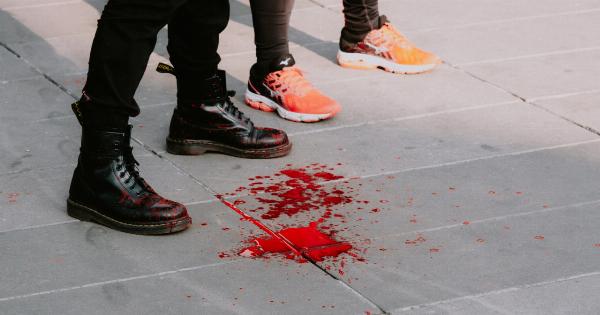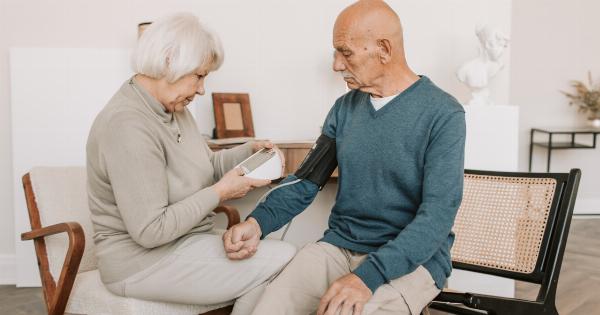Orthostatic hypotension, also known as postural hypotension, is a medical condition characterized by an abnormal drop in blood pressure when a person stands up from a sitting or lying position.
The term “orthostatic” refers to the way the blood pressure changes with body position, while “hypotension” refers to low blood pressure.
Symptoms of Orthostatic Hypotension
Orthostatic hypotension can cause a variety of symptoms, including:.
- Dizziness or lightheadedness
- Blurred vision
- Fainting or near fainting
- Feeling weak or fatigued
- Nausea
- Headache
- Confusion
- Difficulty concentrating
These symptoms typically occur within a few seconds to a few minutes of standing up and may improve or resolve when sitting or lying back down.
Causes of Orthostatic Hypotension
Orthostatic hypotension can have various causes, including:.
Dehydration
One of the most common causes of orthostatic hypotension is dehydration.
When the body loses too much fluid, such as through excessive sweating, vomiting, or diarrhea, there may not be enough blood volume to maintain adequate blood pressure when standing up.
Medications
Several types of medications can lead to orthostatic hypotension as a side effect. These include certain blood pressure medications, diuretics, antidepressants, muscle relaxants, and medications used to treat Parkinson’s disease.
Severe Blood Loss
In cases of significant blood loss, such as from trauma or internal bleeding, there might not be enough blood volume to support normal blood pressure levels when changing positions.
Autonomic Nervous System Disorders
The autonomic nervous system helps regulate blood pressure and heart rate.
Certain disorders that affect this system, such as Parkinson’s disease, diabetes, multiple system atrophy, and certain neurological disorders, can disrupt the body’s ability to maintain blood pressure stability.
Heart Problems
Heart conditions, such as heart failure, a heart attack, or heart valve problems, can contribute to orthostatic hypotension.
These conditions can affect the heart’s ability to pump blood effectively, leading to decreased blood pressure upon standing.
Prolonged Bed Rest
When someone spends an extended period in bed or immobile, blood can pool in the lower extremities, leading to a temporary drop in blood pressure upon standing.
Age
Orthostatic hypotension is more common in older adults. Certain age-related changes, such as decreased blood vessel elasticity and decreased baroreceptor function, can contribute to the condition.
Anemia
Anemia, a condition characterized by a low red blood cell count, can lead to orthostatic hypotension. Red blood cells carry oxygen to the body’s tissues, and a decrease in their numbers can affect circulation and blood pressure regulation.
Pregnancy
Orthostatic hypotension can occur during pregnancy, particularly in the second and third trimesters.
Hormonal changes, increased blood volume, and the pressure of the growing uterus on blood vessels can all contribute to decreased blood pressure upon standing.
Other Causes
Other less common causes of orthostatic hypotension include certain nervous system disorders, vitamin deficiencies, adrenal insufficiency, and alcohol or drug use.
Diagnosing Orthostatic Hypotension
Orthostatic hypotension is typically diagnosed through a combination of medical history, physical examination, and specialized tests.
The doctor may take the patient’s blood pressure and heart rate measurements in different positions, such as lying down, sitting, and standing. Additionally, the doctor might perform tilt table testing or other autonomic function tests to assess the body’s response to changes in position.
Treating Orthostatic Hypotension
The treatment for orthostatic hypotension depends on the underlying cause. In some cases, lifestyle modifications and conservative measures may be sufficient to manage the condition. These may include:.
- Increasing fluid intake to prevent dehydration
- Gradually rising from a seated or lying position
- Avoiding alcohol and certain medications that can worsen symptoms
- Wearing compression stockings to improve blood flow to the legs
- Engaging in regular physical exercise to improve circulation
If medications are causing orthostatic hypotension, the doctor may adjust the dosage or switch to alternative medications.
In cases where an underlying condition is contributing to the condition, treating that condition may help alleviate symptoms of orthostatic hypotension.
Conclusion
Orthostatic hypotension is a condition characterized by a sudden drop in blood pressure upon standing up. It can cause various symptoms, such as dizziness, fainting, and weakness.
The condition has multiple possible causes, including dehydration, certain medications, heart problems, and autonomic nervous system disorders. Diagnosis usually involves medical history, physical examination, and specialized tests. Treatment focuses on addressing the underlying cause and may involve lifestyle modifications and medication adjustments.





























